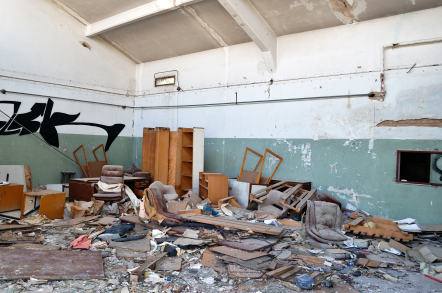 How much damage can a hurricane do in an area that rarely experiences them? A big storm can cause enough destruction to shut down operations for several days – if not permanently. You spend years building your business; what can unpreparedness cost your enterprise? By making a plan and taking steps to prevent water damage, you can spend less money on document restoration and bounce back before your competitors do.
How much damage can a hurricane do in an area that rarely experiences them? A big storm can cause enough destruction to shut down operations for several days – if not permanently. You spend years building your business; what can unpreparedness cost your enterprise? By making a plan and taking steps to prevent water damage, you can spend less money on document restoration and bounce back before your competitors do.
How to Prevent Water Damaged Documents
From hurricanes to sprinkler system malfunctions, water damage can occur in several forms. think about the critical documents that could ruin your business if they were lost. These can include contracts, deeds, titles, sensitive client information, research and more. Take the following steps to help your business prepare for the unthinkable before the next hurricane season.
Scan all the critical documents in your office. Businesses often do this in an effort to go paperless, but this task can also save you time in regards to document restoration. When you scan your documents, you create virtual copies you can easily retrieve should something happen to the originals. If the task of scanning your documents seems overwhelming, enlist the help of a document scanning firm.
Properly store vital documents. Keep the important documents in your office safe by investing in a fire- and waterproof file cabinet that locks. While the initial investment may seem hefty, it’s less expensive than the cost of lost business and information. In the meantime, place your documents in zippered plastic bags within airtight containers. Place the containers in the top drawers of a file cabinet or on the upper shelves of a room you keep locked.
Move the most vital documents offsite. When only the original copies of certain documents are legally valid, store them in a safe location offsite, such as in a bank’s safety deposit box. If you think you’ll need to refer to any of these documents, keep copies on hand.
Create an emergency plan. When a big storm hits, all of your employees should know what to do minimize water damage and encourage safety. To prevent water damaged documents, include steps in your emergency plan to keep your equipment and files safe. The plan should also include after-storm recovery steps as well as a document restoration plan for wet papers or books.
Assign a team leader. Depending on the size of your business, such a leader can be an individual who oversees the proper backup and storage of documents for the whole company, or it can be one individual per department. This leader should be well-versed in the company’s emergency procedures and disaster plans and should have the skills to coordinate efforts to prevent water damaged documents before a storm arrives.
How NOT to Handle Wet Documents
Water damaged documents can be finicky, and handling them incorrectly can make successful document restoration difficult. If your business suffers water damage, DON’T:
Delay. You have a 48-hour window to have your water damaged documents dried before mold and other factors begin accelerating damage.
Try to dry the wet documents at “ground zero.” When you want to air-dry wet documents, take them to a safe, dry place. The materials you’ll need include fans or dehumidifiers (to dry the air surrounding the documents), large trays, mat board or Plexiglas, plastic bags and blotter paper.
Forget the gloves. The oils on your hands and general contact can further damage wet documents, so wear gloves and only touch wet documents around the edges.
Leave documents or photos in frames. Prolonged moisture can cause further damage and promote mold growth. If a frame is broken, secure the broken glass with masking tape before attempting to remove the photo or document.
Stack wet documents on top of each other. Instead, place a piece of wax paper between each sheet.
If you think your own drying efforts are causing more harm than good, or if you have more wet document than you can handle alone, call a document restoration company to help. Their state-of-the-art techniques can quickly clean and dry wet documents – and can even restore those damaged by mold.
About the Author: This guest post is courtesy of Joe Perko, Director of Field Services at Rapid Refile. Rapid Refile is a recognized leader in document restoration and recovery of water damaged documents, vacuum-freeze drying, mold remediation and fire restoration services for businesses and individuals.